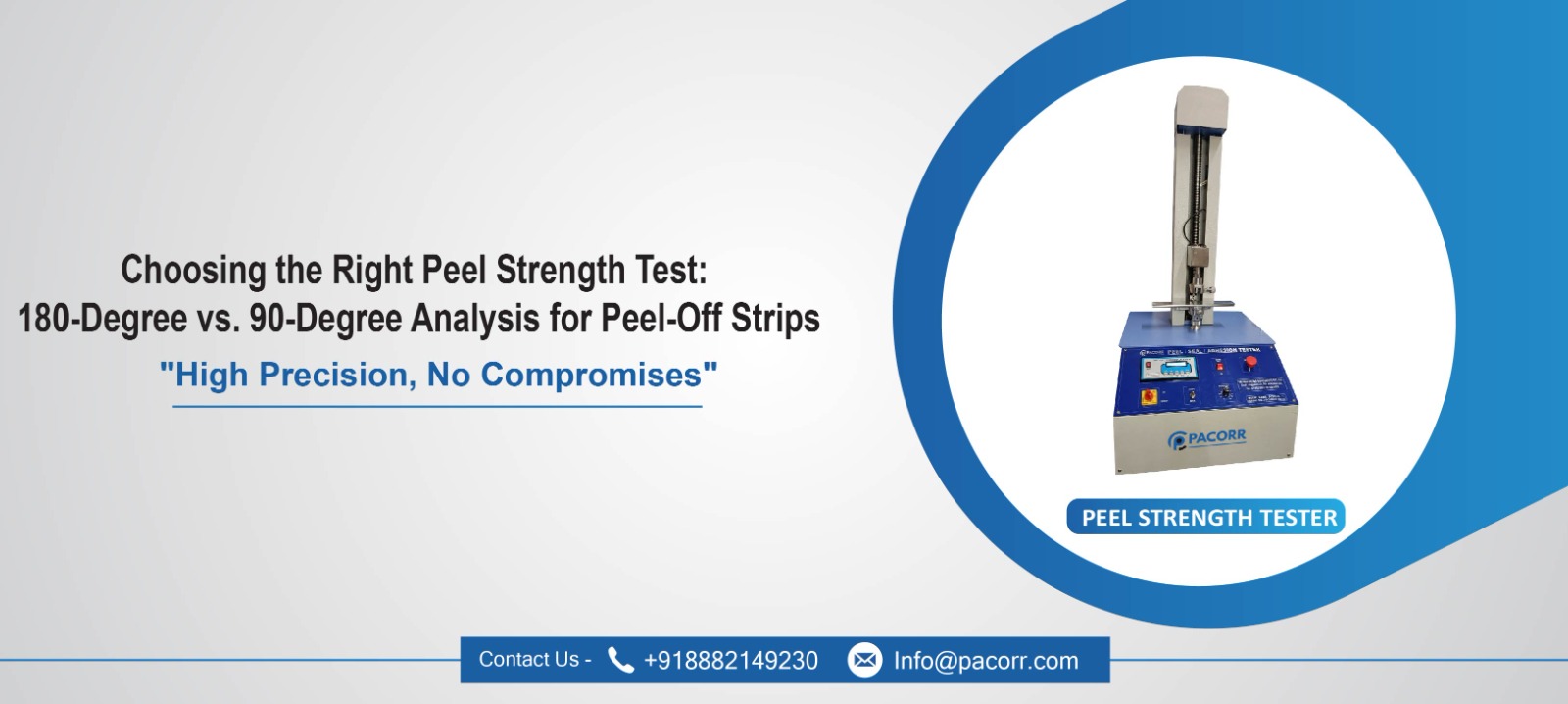
 Peel strength testing is a crucial aspect of evaluating the quality and performance of peel-off strips used in various industries, including packaging, medical, automotive, and more. The determination of the appropriate peel angle-whether it's 180 degrees or 90 degrees - largely depends on the specific application and requirements of the material being tested.
Peel strength testing is a crucial aspect of evaluating the quality and performance of peel-off strips used in various industries, including packaging, medical, automotive, and more. The determination of the appropriate peel angle-whether it's 180 degrees or 90 degrees - largely depends on the specific application and requirements of the material being tested.
The choice between 180-degree and 90-degree peel strength testing primarily revolves around the intended use of the peel-off strips and the nature of the adhesive bond being assessed.
Understanding Peel Strength Testing:
180-Degree Peel Test:
The 180 Degree Peel Test is a widely used method for evaluating the peel strength of flexible adhesive materials. This test involves peeling the adhesive layer back over itself at a 180-degree angle, which is particularly effective for materials like tapes, labels, and films. The procedure begins with preparing the test specimen, where the adhesive is applied to a substrate and allowed to cure under controlled conditions. The specimen is then mounted on a universal testing machine, with one end fixed and the other attached to the machine's grip. As the machine operates, it peels the adhesive at a constant speed, and the force required to separate the layers is measured and recorded.
The data obtained from the 180 Degree Peel Test is critical for assessing the adhesive's performance. Higher peel forces indicate stronger adhesive bonds, which are essential for applications where durable adhesion is required. This test is commonly used in the packaging industry to evaluate the strength of adhesive tapes and labels, in the construction of laminates, and in the production of flexible electronics. Despite its advantages, such as simplicity and quick execution, the 180 Degree Peel Test may not always reflect real-world stresses accurately. Nonetheless, it remains a valuable tool for quality control and product development in various industries.
90-Degree Peel Test:
The 90 Degree Peel Test is designed to assess the peel strength of adhesives used on rigid or semi-rigid materials. In this test, the adhesive material is peeled away from the substrate at a 90-degree angle, which better simulates the stresses encountered in real-world applications where perpendicular forces are involved. The procedure starts with the preparation of the adhesive bond, ensuring that the surfaces are clean and properly aligned. The bonded specimen is then secured in a universal testing machine, with one end fixed and the other end free to be peeled.
As the testing machine peels the adhesive at a consistent speed and angle, the force required to separate the materials is recorded. This data helps determine the adhesive's performance under perpendicular stress conditions, providing insights into its durability and reliability. The 90 Degree Peel Test is particularly useful in industries such as automotive and aerospace, where the adhesion of coatings, films, and other components to rigid substrates is critical. It offers several benefits, including the ability to test high-stress applications and provide realistic data. However, it requires a more complex setup compared to the 180-degree test and is limited to specific material types. Despite these challenges, the 90 Degree Peel Test remains an essential method for ensuring the quality and performance of adhesive bonds in demanding applications.
Determining the Suitable Test
1. Application Requirements:
The choice between these tests should align with the specific application of the peel-off strips. For instance, if the material is intended to be peeled off in a manner that mimics everyday use (parallel or perpendicular to the surface), the appropriate test should be chosen accordingly.
2. Material Properties:
Understanding the material properties is crucial. Some materials may exhibit different peel strengths at different angles due to their adhesive nature, flexibility, or thickness. Conducting both tests can provide comprehensive insights into the material's behavior under different peeling conditions.
3. Industry Standards:
Certain industries have standardized testing procedures specifying the peel angle for their products. Adhering to these standards is essential for ensuring the quality and compliance of the peel-off strips with industry requirements.
Choosing the Right Peel Strength Tester
When considering a peel strength tester for evaluating peel-off strips, it's essential to select a device that allows for both 180-degree and 90-degree peel testing capabilities. This versatility ensures comprehensive analysis of the material's performance under varying conditions.
Look for a tester equipped with customizable settings for peel angle, speed, and precision in force measurement. Digital systems offering real-time data acquisition and analysis can provide accurate and reliable results, aiding in quality control and product development.
Both 180-degree and 90-degree peel strength tests are valuable methods for evaluating the quality of peel-off strips. The choice between these tests depends on the specific requirements of the application, material properties, and adherence to industry standards. Opting for a peel-strength tester that accommodates both testing angles ensures a comprehensive assessment of the material's performance, enabling manufacturers to produce high-quality peel-off strips suitable for their intended purposes. Such testers can measure both peel strength and peel angle simultaneously, providing more accurate results and making it easier to compare different materials. This can help manufacturers to ensure that the peel-off strips they produce are of the desired strength and angle.
Thanks to Pacorr Testing instruments, we have all the required quality testing instruments that have helped us to ensure the best quality delivered to our clients.

Danish
Fair Exports Pvt. Ltd.

